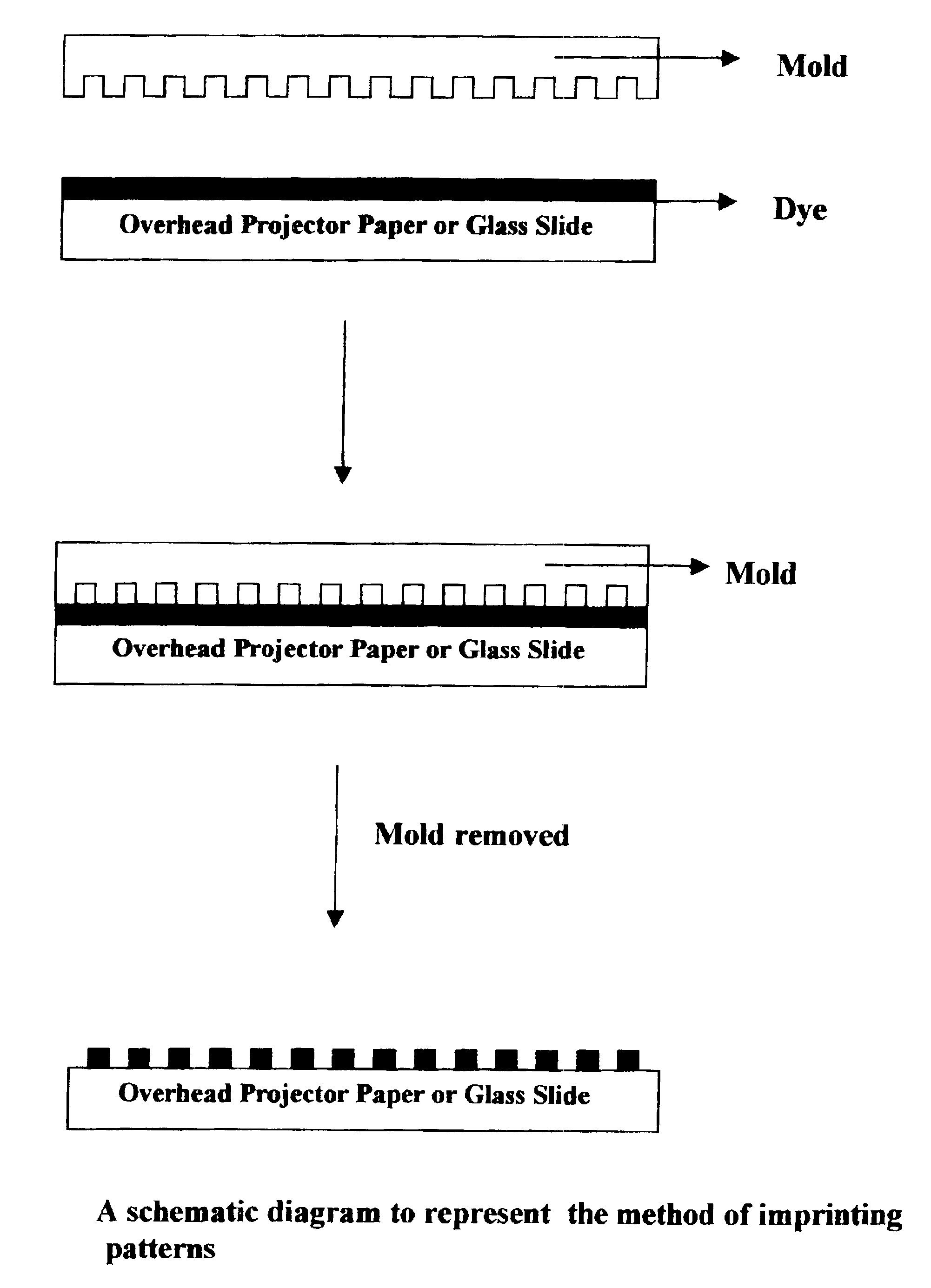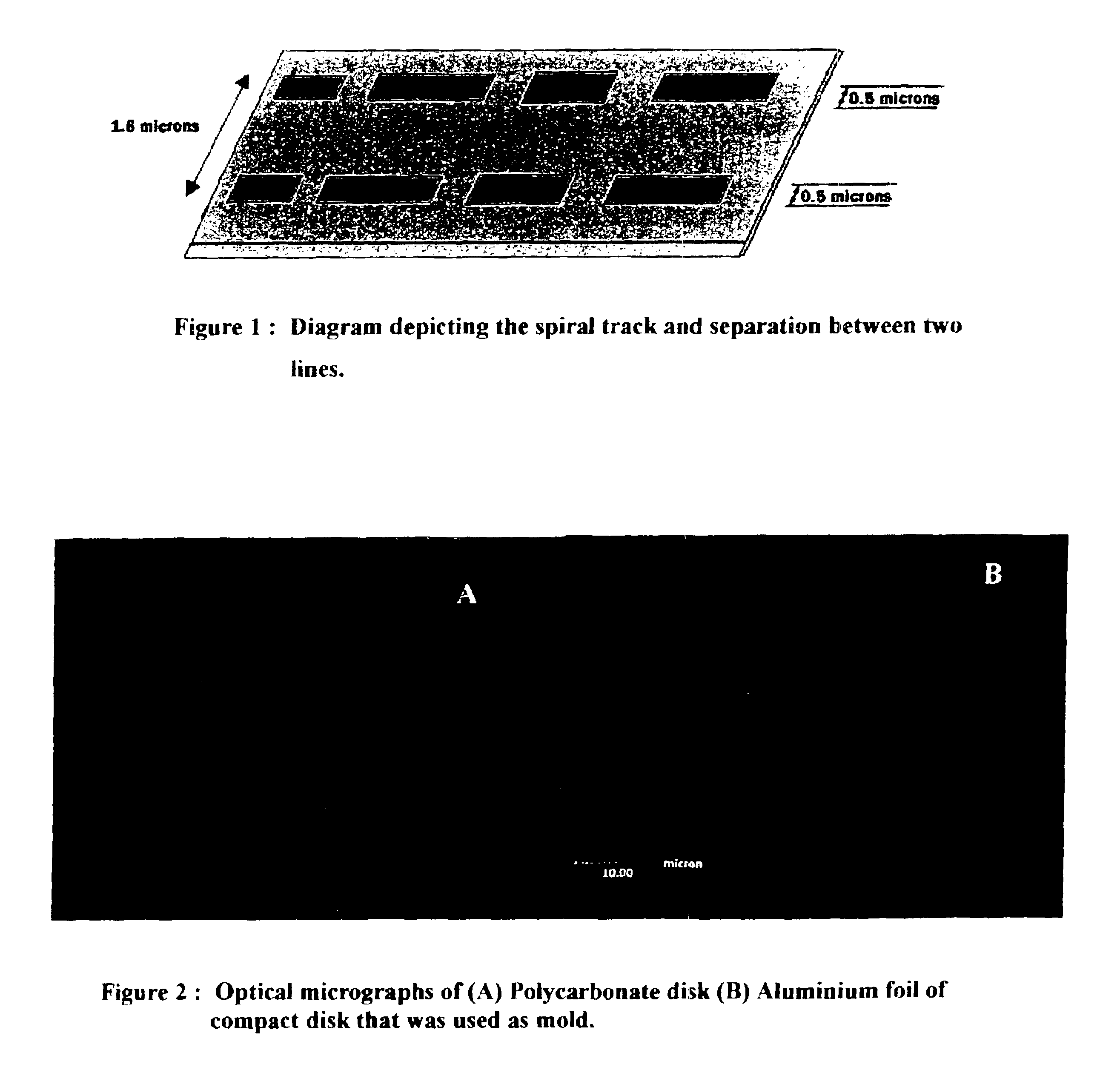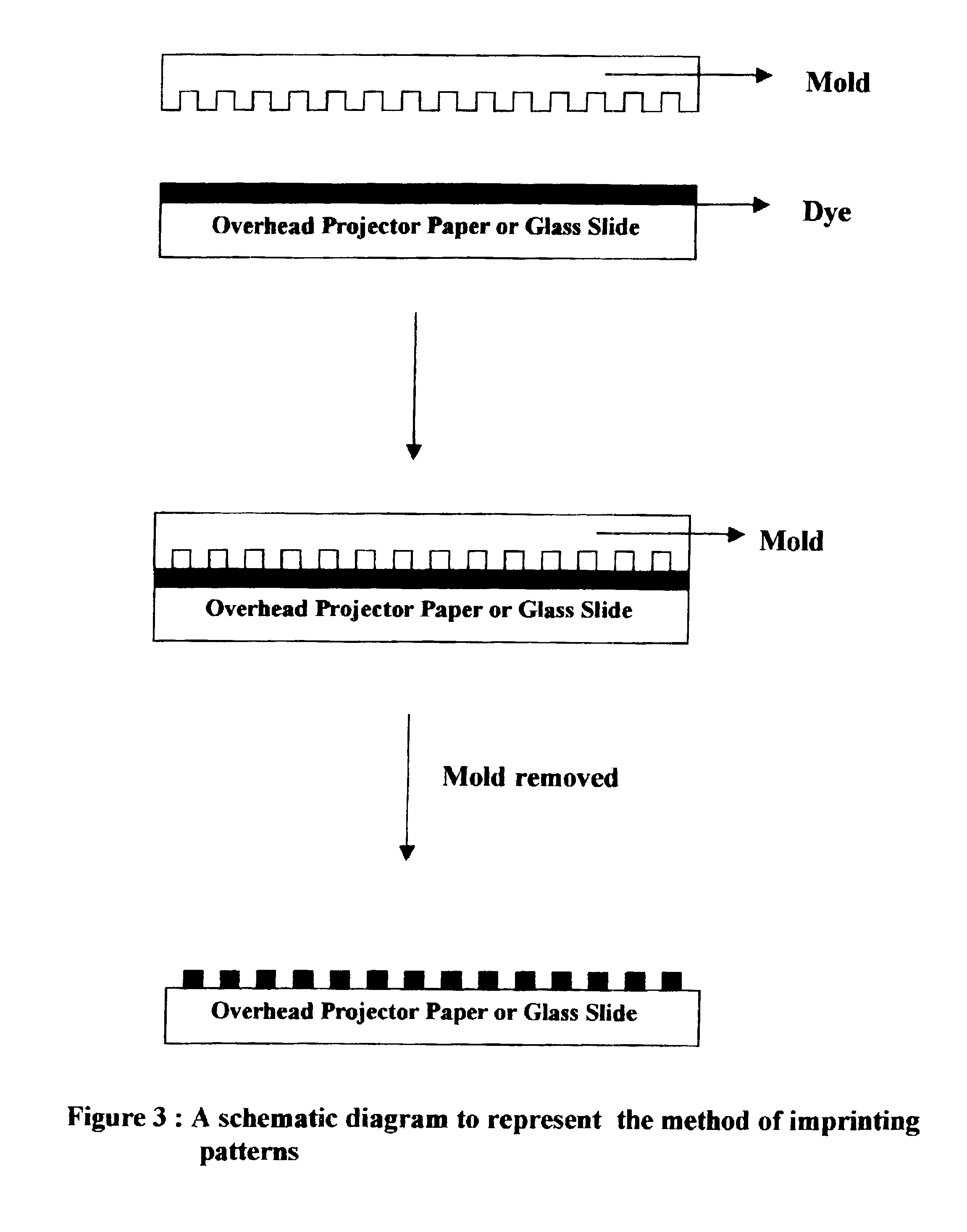Colored nanolithography on glass and plastic substrates
a technology of plastic substrates and nanolithography, which is applied in the direction of printing, manufacturing tools, coatings, etc., can solve the problems of nanolithography using stamps, reports of generating patterns on color at the submicron level, and none of the above methods have emphasized the generation of colored patterns that have enormous application potential
- Summary
- Abstract
- Description
- Claims
- Application Information
AI Technical Summary
Benefits of technology
Problems solved by technology
Method used
Image
Examples
Embodiment Construction
Accordingly, the present invention provides a process for generating colored nanolithography patterns of parallel lines or cross pattern lines on a glass or plastic substrate, said process consisting the steps of pressing a polycarbonate or aluminium mold obtained from a compact disk on a previously inked glass or plastic surface for one or more times to create lithographic patterns of parallel coloured lines or cross pattern lines.
More particularly, the present invention provides a process for generating colored nanolithography patterns of parallel lines or cross pattern lines on a glass or plastic substrate, said process consisting the steps of:
(a) inking the glass or plastic substrate using a permanent marker ink;
(b) allowing the ink to get semi-dried by keeping the substrate in air for about 30 to 90 seconds;
(c) pressing a polycarbonate or aluminium mold obtained from a compact disk on the semi-dried inked glass or plastic substrate for one or more times, and
(d) drying the glass...
PUM
| Property | Measurement | Unit |
|---|---|---|
| thick | aaaaa | aaaaa |
| depth | aaaaa | aaaaa |
| depth | aaaaa | aaaaa |
Abstract
Description
Claims
Application Information
 Login to View More
Login to View More - R&D
- Intellectual Property
- Life Sciences
- Materials
- Tech Scout
- Unparalleled Data Quality
- Higher Quality Content
- 60% Fewer Hallucinations
Browse by: Latest US Patents, China's latest patents, Technical Efficacy Thesaurus, Application Domain, Technology Topic, Popular Technical Reports.
© 2025 PatSnap. All rights reserved.Legal|Privacy policy|Modern Slavery Act Transparency Statement|Sitemap|About US| Contact US: help@patsnap.com



